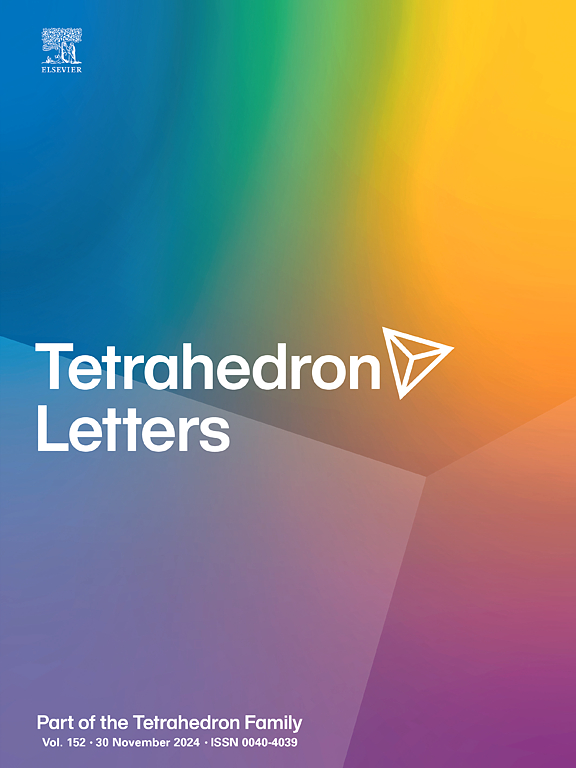立体选择合成,光学表征,DFT,和金属离子检测四对叔丁基噻唑烷衍生物含酰胺和硫酰胺片段的下边缘
IF 1.5
4区 化学
Q3 CHEMISTRY, ORGANIC
引用次数: 0
摘要
在新的对叔丁基硫杯[4]芳烃中存在对甲基乙酰胺和对甲基硫乙酰胺碎片。对叔丁基硫代杯芳烃1与2-氯(对甲基)乙酰胺反应生成硫代杯芳烃2- 3的乙酰胺衍生物,然后用Lawesson试剂硫代生成硫代杯芳烃衍生物4 - 5。利用傅里叶变换红外光谱、核磁共振光谱、金属离子探测光谱、光吸收光谱等分析了新型噻杯芳烃衍生物的结构。密度泛函理论计算揭示了对噻烷芳烃衍生物的电子、结构和反应性质的重要见解(2-5)。化合物2表现出最高的亲核性、最低的能隙和最大的金属吸收反应性,强调其适合配位化学。采用B3lyp/6-311++G**方法进行的计算分析与实验数据吻合良好,证实了理论模型的正确性。红外光谱实验结果与理论结果吻合较好。分子静电电位映射强调了亲电相互作用和稳定金属配体键的可能位点。本文章由计算机程序翻译,如有差异,请以英文原文为准。
![Stereoselective synthesis, optical characterization, DFT, and metal ion detection of tetra p-tert-butylthiacalix[4]arene derivatives containing amide and thiamide fragments at lower rim](https://img.booksci.cn/booksciimg/2025-6/102304657421780463058.jpg)
Stereoselective synthesis, optical characterization, DFT, and metal ion detection of tetra p-tert-butylthiacalix[4]arene derivatives containing amide and thiamide fragments at lower rim
P-tolylacetamide and p-tolylthioacetamide fragments are present in new p-tert-butylthiacalix[4]arenes at lower rims. P-tert-butylthiacalix[4]arene1reacted with 2-chloro (p-tolyl)acetamide to produce acetamide derivatives of thiacalixarene2–3, which are then thionated with Lawesson's reagent to produce thiacetamidethiacalixarenes derivatives 4–5. FT-IR, NMR, metal ion detection, and the optical absorption spectrum characteristics of the novel thiacalixarenes derivative have all been used to analyze their structures. Density Functional Theory calculations revealed critical insights into the electronic, structural, and reactive properties of thiacalixarene derivatives (2–5). Compound 2 exhibited the highest nucleophilicity, lowest energy gap, and greatest reactivity towards metal uptake, underscoring its suitability for coordination chemistry. Computational analyses using the B3lyp/6-311++G** method matched well with experimental data, confirming the theoretical models. The IR spectra showed good agreement between experimental and theoretical results. Molecule electrostatic potential mapping highlighted possible sites for electrophilic interactions and stable metal-ligand bonding.
求助全文
通过发布文献求助,成功后即可免费获取论文全文。
去求助
来源期刊

Tetrahedron Letters
化学-有机化学
CiteScore
3.50
自引率
5.60%
发文量
521
审稿时长
28 days
期刊介绍:
Tetrahedron Letters provides maximum dissemination of outstanding developments in organic chemistry. The journal is published weekly and covers developments in techniques, structures, methods and conclusions in experimental and theoretical organic chemistry. Rapid publication of timely and significant research results enables researchers from all over the world to transmit quickly their new contributions to large, international audiences.
 求助内容:
求助内容: 应助结果提醒方式:
应助结果提醒方式:


